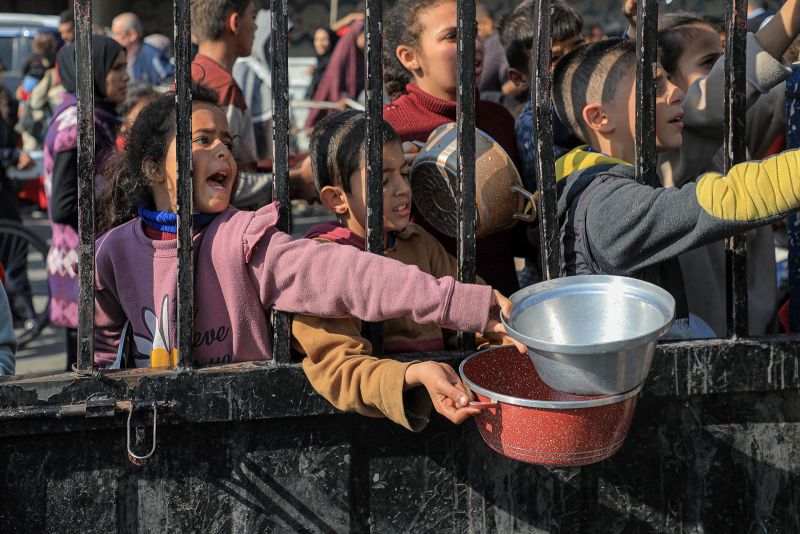
Famine Crisis in Gaza: The Urgent Need for Humanitarian Aid

The war in Gaza has led to a devastating famine crisis, with hundreds of thousands of Palestinians facing starvation. The urgent need for humanitarian aid and the challenges of providing assistance in the besieged enclave have brought attention to the dire situation in Gaza. This article delves into the impact of the famine, the obstacles in aid delivery, and the plea for greater access to Gaza for humanitarian relief.
The Devastating Impact of Famine
Israel's war in Gaza has brought a famine crisis with incredible speed, leaving hundreds of thousands of Palestinians starving in the besieged enclave. The UN's emergency relief chief, Martin Griffiths, described the situation as extraordinary and wholly unwelcome, emphasizing that the majority of Gazans at risk of starving are actually in famine, not just at risk of it. The relentless bombing in Gaza has resulted in widespread devastation, displacing nearly 90% of the pre-war population and leaving civilians living with the threat of imminent death by airstrikes, starvation, or disease.
Children try to get food relief in the southern Gaza Strip city of Rafah, on December 31, 2023.
The dire humanitarian situation in the enclave has raised concerns about the potential for generational hatred, with Griffiths warning that the security of both Israel and Gaza is at risk. The impact of the war has been catastrophic, with more than 24,000 people killed and over 60,000 injured. This has led to a significant displacement of the population, exacerbating the already dire conditions in Gaza.
Displaced Palestinians queue for food donations in the southern Gaza Strip city of Rafah, on November 30, 2023. The warring parties have agreed on an extension of the pause in fighting to allow time for Hamas to release more Israeli hostages in exchange for Palestinian prisoners. (Photo by MOHAMMED ABED / AFP) (Photo by MOHAMMED ABED/AFP via Getty Images)
Challenges in Aid Delivery
Aid delivery to Gaza has been hindered by numerous obstacles, including the slow trickle of aid from border crossings, denial of critical supplies by Israel, and challenges in providing humanitarian aid to the northern strip. Griffiths highlighted the difficulties in accessing routes for aid delivery, citing unreliable deconfliction of access routes and the insecurity faced by civilians moving within the enclave. The situation has created a fundamental barrier to the effective delivery of humanitarian aid, as the needs of the population remain unmet due to the obstacles in aid delivery.
People wait for food relief in the southern Gaza Strip city of Rafah, on December 31, 2023.
Urgent Plea for Access to Humanitarian Relief
The urgent need for greater access to Gaza for humanitarian aid has prompted a joint appeal from UN agencies, including the World Food Programme, UNICEF, and the World Health Organization. The appeal emphasized the critical need for a fundamental step change in the flow of humanitarian aid into Gaza, highlighting the risk of people dying of hunger just miles from trucks filled with food. The harsh living conditions, insufficient access to essential supplies, and outbreaks of disease have further exacerbated the humanitarian crisis, with the entire population of Gaza facing high levels of acute food insecurity. The plea for greater access to humanitarian relief is a desperate call to prevent the looming famine from becoming a reality, especially for the vulnerable children in Gaza who are at high risk of malnutrition and disease.
















